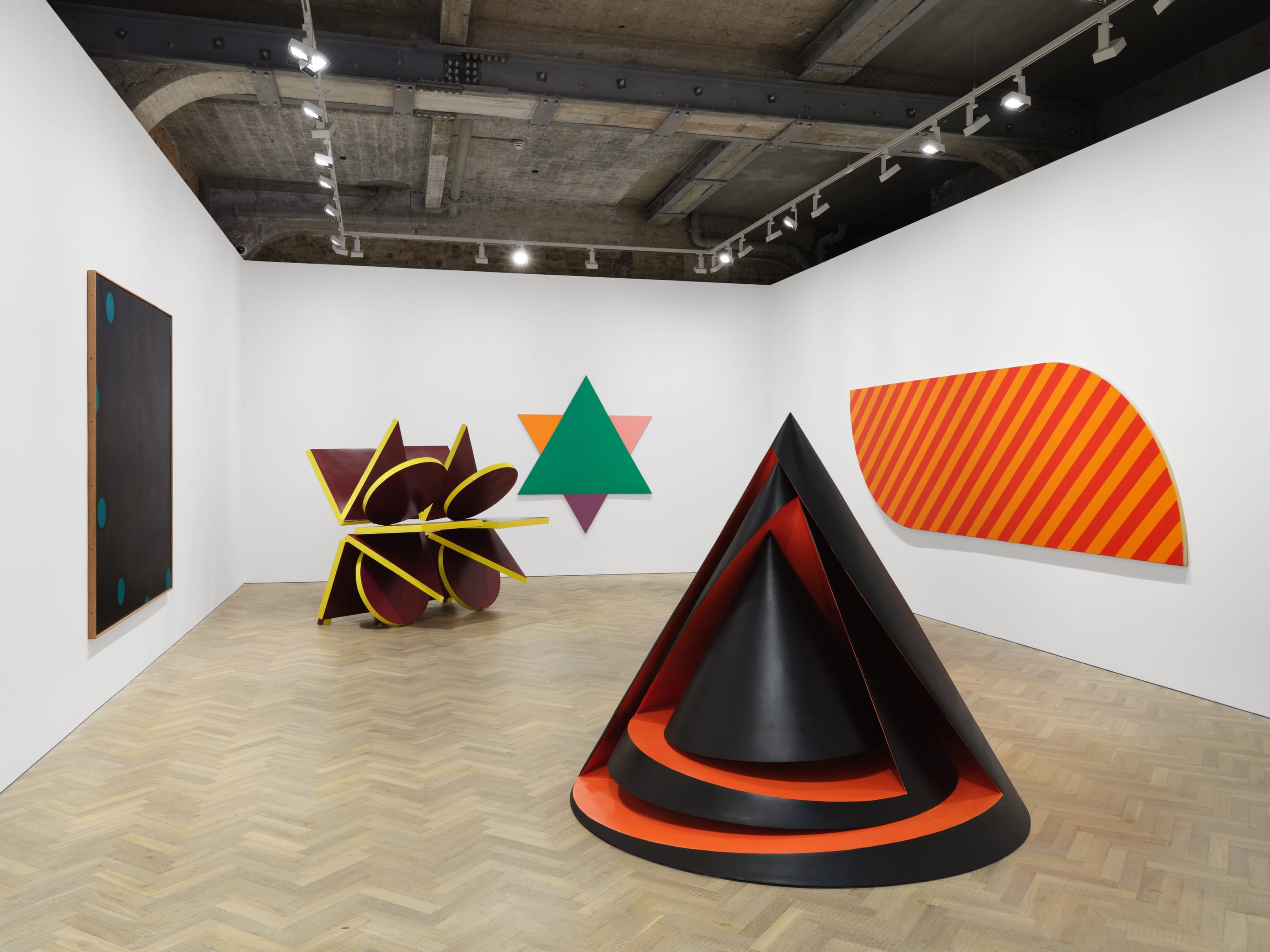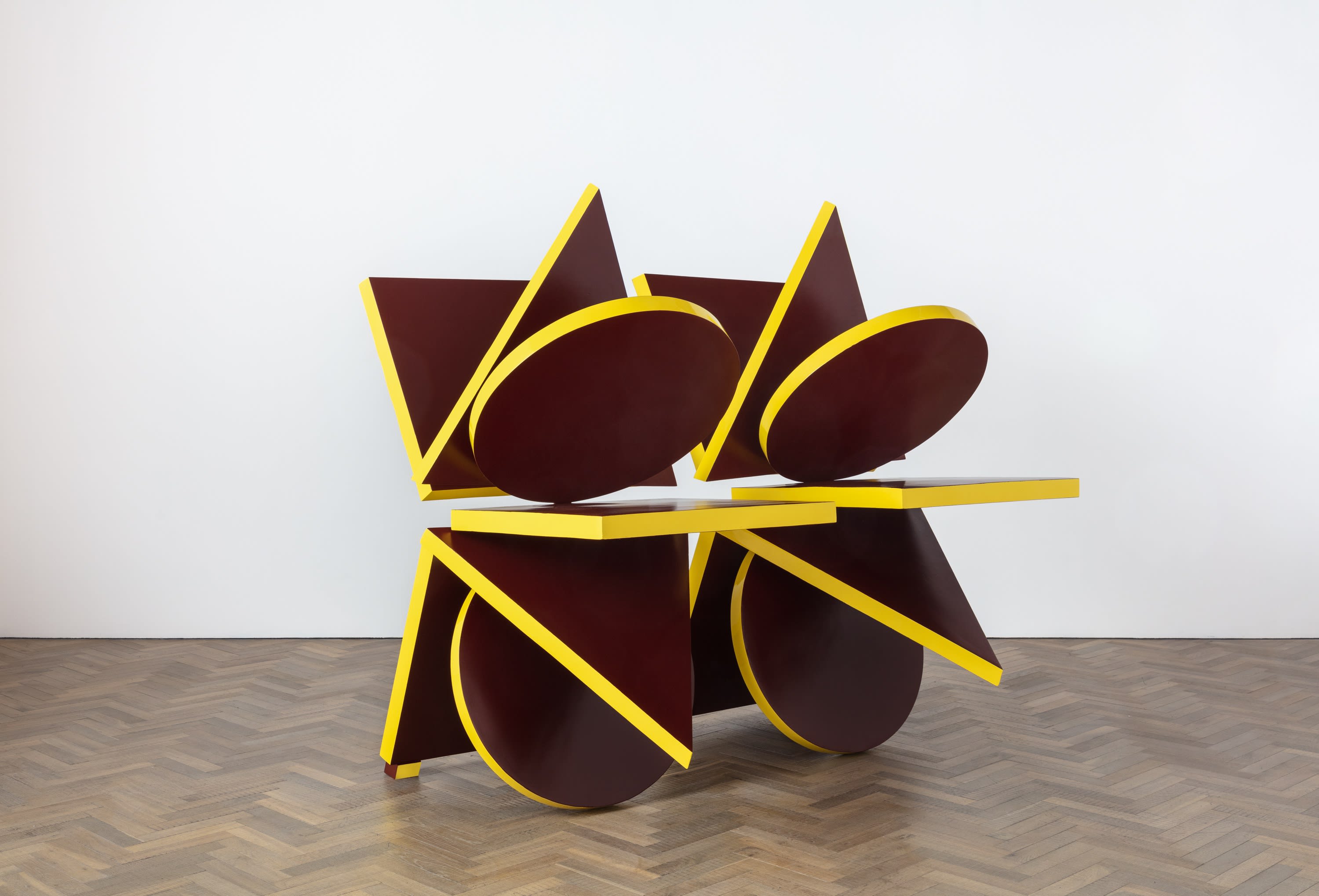Phillip King (b. 1934, Tunis, d. 2021, London) was one of the key sculptors of the post-war period. He was an assistant to Henry Moore and a student and then contemporary of Anthony Caro. After graduating he became a key member of the group of young artists who re-imagined sculpture from the 1960s onwards. King’s work was included in the seminal Primary Structures exhibition at Jewish Museum, New York in 1966 (a turning point in contemporary sculpture) alongside Carl Andre, Anthony Caro, Dan Flavin, Donald Judd, Robert Morris and Robert Smithson. King represented Great Britain at the 1968 Venice Biennale (alongside Bridget Riley) and has been the subject of ambitious museum survey shows at Whitechapel Gallery, London (1968), Kröller Muller National Museum, Netherlands (1974), Hayward Gallery, London (1981), Le Consortium, Dijon (2013) and Tate Britain, London (2014). King's work is in numerous illustrious public collections worldwide including Tate, London; MoMA, New York; Pompidou, Paris; MOCA, LA; and Rijksmuseum, Amsterdam, among others. Many works by King are permanently installed in public spaces in major cities around the world including London, UK; Munich, Germany; Osaka, Japan and Rotterdam, the Netherlands. King also has works in sculpture parks including Yorkshire Sculpture Park, UK; Kistefos Museet, Norway, Kröller Muller, the Netherlands and Hakone Open Air Museum, Japan. His final public sculpture was unveiled in the French City of Rennes in the spring of 2022.
More about the artist


 Jeremy Moon, Shadows, 1965
Jeremy Moon, Shadows, 1965 Phillip King, And the Birds Began to Sing, 1964/2018
Phillip King, And the Birds Began to Sing, 1964/2018 Phillip King, Point X, 1965
Phillip King, Point X, 1965 Jeremy Moon, Yellow Flight, 1967
Jeremy Moon, Yellow Flight, 1967
 Phillip King, Maquette for Slant, 2013
Phillip King, Maquette for Slant, 2013 Jeremy Moon, Carousel, 1966
Jeremy Moon, Carousel, 1966 Jeremy Moon, 723D2, 1972
Jeremy Moon, 723D2, 1972 Phillip King, Maquette for Dunstable Reel, 2013
Phillip King, Maquette for Dunstable Reel, 2013
 Jeremy Moon, 6/73, 1973
Jeremy Moon, 6/73, 1973 Phillip King, Maquette for Genghis Khan, 2011
Phillip King, Maquette for Genghis Khan, 2011



























